Polyurethane Foam Composites Reinforced with Renewable Fillers for Cryogenic Insulation
Abstract
:1. Introduction
2. Materials and Methods
2.1. Materials
2.2. Methods
2.2.1. Silanization of Fillers
2.2.2. Characterization of Fillers
2.2.3. Preparation of Filler–Polyol Mixture Dispersions
2.2.4. Characterization of Filler–Polyol Mixture Dispersions
2.2.5. Calculation of Isocyanate Index
2.2.6. Preparation of Rigid PU Foam and Composites
2.2.7. Mechanical Test Methods at 293 K and 77 K (Cryogenic Temperature)
2.2.8. Adhesion Tests
2.2.9. Determination of Coefficient of Thermal Conductivity
2.2.10. Thermomechanical Analysis (TMA) and Safety Coefficient
2.2.11. Morphology of Foams
3. Results and Discussion
3.1. Fillers
3.1.1. Particle Size Distribution of SD
3.1.2. SEM
3.1.3. FTIR
3.2. Filler–Polyol Mixture Dispersions
3.3. Characteristics of Obtained Filler–PU Foam Composites
3.3.1. Analysis of PU Composites with 1.5% Filler Concentration
3.3.2. Analysis of PP40 Composites with 0.5–1.25% Filler Concentration
3.3.3. Morphology of PU Composites
4. Conclusions
Author Contributions
Funding
Institutional Review Board Statement
Informed Consent Statement
Data Availability Statement
Conflicts of Interest
References
- Li, Y.; Sun, X.S. Synthesis and characterization of acrylic polyols and polymers from soybean oils for pressure-sensitive adhesives. RSC Adv. 2015, 5, 44009–44017. [Google Scholar] [CrossRef]
- Dhaliwal, G.S.; Anandan, S.; Chandrashekhara, K.; Lees, J.; Nam, P. Development and Characterization of Polyurethane Foams with Substitution of Polyether Polyol with Soy-Based Polyol. Eur. Polym. J. 2018, 107, 105–117. [Google Scholar] [CrossRef]
- Ivdre, A.; Abolins, A.; Sevastyanova, I.; Kirpluks, M.; Cabulis, U.; Merijs-Meri, R. Rigid polyurethane foams with various isocyanate indices based on polyols from rapeseed oil and waste PET. Polymers 2020, 12, 738. [Google Scholar] [CrossRef] [Green Version]
- Kirpluks, M.; Ivdre, A.; Fridrihsone, A.; Cabulis, U. Tall oil based rigid polyurethane foams thermal insulation filled with nanofibrillated cellulose. Polimery 2020, 65, 719–727. [Google Scholar] [CrossRef]
- Panda, D.H. Handbook of Tall Oil Rosin Production, Processing and Utilization; Print-Ways: Delhi, India, 2008; pp. 5–27. [Google Scholar]
- Padhan, R.K.; Gupta, A.A. Preparation and evaluation of waste PET derived polyurethane polymer modified bitumen through in situ polymerization reaction. Constr. Build. Mater. 2018, 158, 337–345. [Google Scholar] [CrossRef]
- Kairyte, A.; Kremensas, A.; Balčiunas, G.; Członka, S.; Strakowska, A. Closed cell rigid polyurethane foams based on low functionality polyols: Research of dimensional stability and standardized performance properties. Materials 2020, 13, 1438. [Google Scholar] [CrossRef] [PubMed] [Green Version]
- Cakić, S.M.; Ristić, I.S.; Cincović, M.M.; Nikolić, N.; Nikolić, L.B.; Cvetinov, M.J. Synthesis and properties biobased waterborne polyurethanes from glycolysis product of PET waste and poly(caprolactone) diol. Prog. Org. Coat. 2017, 105, 111–122. [Google Scholar] [CrossRef]
- Vitkauskiene, I.; Makuska, R.; Stirna, U.; Cabulis, U. Synthesis and physical-mechanical properties of polyurethane- polyisocyanurate foams based on PET-waste-derived modified polyols. J. Cell. Plast. 2011, 47, 467–482. [Google Scholar] [CrossRef]
- Filipova, I.; Fridrihsone, V.; Cabulis, U. Synthesis of Nanofibrillates Cellulose by Combined Ammonium Persulphate treatment with Ultrsound and Mechanical Processing. Nanomaterials 2018, 8, 640. [Google Scholar] [CrossRef] [Green Version]
- Xie, Y.; Hill, C.A.S.; Xiao, Z.; Militz, H.; Mai, C. Silane coupling agents used for natural fiber/polymer composites: A review. Compos. Part A Appl. Sci. Manuf. 2010, 41, 806–819. [Google Scholar] [CrossRef]
- Zadorecki, P.; Michell, A.J. Future prospects for wood cellulose as reinforcement in organic polymer composites. Polym. Compos. 1989, 10, 69–77. [Google Scholar] [CrossRef]
- Lu, J.Z.; Wu, Q.; McNabb, H.S. Chemical coupling in wood fiber and polymer composites: A review of coupling agents and treatments. Wood Fiber Sci. 2000, 32, 88–104. [Google Scholar]
- Jiang, H.; Kamdem, P. Development of poly(vinyl chloride)/wood composites. A Literature review. J. Vinyl Addit. Technol. 2004, 10, 59–69. [Google Scholar] [CrossRef]
- Raj, R.G.; Kokta, B.V.; Dembele, F.; Sanschagrain, B. Compounding of cellulose fibers with polypropylene: Effect of fiber treatment on dispersion in the polymer matirx. J. Appl. Polym. Sci. 1989, 38, 1987–1996. [Google Scholar] [CrossRef]
- George, J.; Sreekala, M.S.; Thomas, S. A review on interface modification and characterization of natural fiber reinforced plastic composites. Polym. Eng. Sci. 2001, 41, 1471–1485. [Google Scholar] [CrossRef]
- Murali, G.; Pannirselvam, N. Flexural strengthening of reinforced concrete beams using fibre reinforced polymer laminate: A review. J. Eng. Appl. Sci. 2011, 6, 41–47. [Google Scholar]
- Mukhopadhyay, S.; Deopura, B.L.; Alagiruswamy, R. Interface Behavior in Polypropylene Composites. J. Thermoplast. Compos. Mater. 2003, 16, 479–495. [Google Scholar] [CrossRef]
- Khanjanzadeh, H.; Behrooz, R.; Bahramifar, N.; Gindl-Altmutter, W.; Bacher, M.; Edler, M.; Friesser, T. Surface Chemical Functionalization of Cellulose Nanocrystals by 3-aminopropyltriethoxysilane. Biol. Macromol. 2017, 106, 1288–1296. [Google Scholar] [CrossRef]
- Sun, D.; Stylios, G.K. Investigating the Plasma Modification of natural Fiber Fabrics—The Effect on Fabric Surface and Mechanical Properties. Text. Res. J. 2005, 74, 751–756. [Google Scholar] [CrossRef]
- Beaumont, M.; Bacher, M.; Opietnik, M.; Gindl-Altmutter, W.; Potthast, A.; Rosenau, T. A general aqueous silanization protocol to introduce vinyl, mercapto or azido functionalities onto cellulose fibers and nanocelluloses. Molecules 2018, 23, 1427. [Google Scholar] [CrossRef] [Green Version]
- Lazzari, L.K.; Zampieri, V.B.; Zanini, M.; Zattera, A.J.; Baldasso, C. Sorption capacity of hydrophobic cellulose cryogels silanized by two different methods. Cellulose 2017, 24, 3421–3431. [Google Scholar] [CrossRef]
- Stirna, U.; Beverte, I.; Yakushin, V.; Cabulis, U. Polyurethane and Polyisocyanurate Foams in External Tank Cryogenic Insulation. In Polymers at Cryogenic Temperatures; Kalia, S., Fu, S.Y., Eds.; Springer: London, UK, 2013; pp. 203–244. [Google Scholar]
- Cabulis, U.; Yakushin, V.; Fischer, W.P.P.; Rundans, M.; Sevastyanova, I.; Deme, L. Rigid Polyurethane Foams as External Tank Cryogenic Insulation for Space Launchers. Proceedings of IOP Conference Series: International Conference Baltic Polymer Symposium, Materials Science and Engineering, Jurmala, Latvia, 12–14 September 2018; IOP Publishing: Bristol, UK, 2018; Volume 500. [Google Scholar]
- Cantero, G.; Arbelaiz, A.; Llano-Ponte, R.; Mondragon, I. Effects of fibre treatment on wettability and mechanical behaviour of flax/polypropylene composites. Compos. Sci. Technol. 2003, 63, 1247–1254. [Google Scholar] [CrossRef]
- Lee, C.S.; Lee, J.M. Failure analysis of reinforced polyurethane foam-based LNG insulation structure using damage-coupled finite element analysis. Compos. Struct. 2014, 107, 231–245. [Google Scholar] [CrossRef]
- Tran, V.H.; Kim, J.D.; Kim, J.H.; Kim, S.K.; Lee, J.M. Influence of Cellulose Nanocrystal on the Cryogenic Mechanical Behavior and Thermal Conductivity of Polyurethane Composite. J. Polym. Environ. 2020, 28, 1169–1179. [Google Scholar] [CrossRef]
- Uram, K.; Prociak, A.; Vevere, L.; Pomilovskis, R.; Cabulis, U.; Kirpluks, M. Natural oil based rigid polyurethane foam thermal insulation applicable at cryogenic temperatures. Polymers 2021. submitted. [Google Scholar]
- Kirpluks, M.; Vanags, E.; Abolins, A.; Michalowski, S.; Fridrihsone, A.; Cabulis, U. High functionality bio-polyols from tall oil and rigid polyurethane foams formulated solely using bio-polyols. Materials 2020, 13, 1985. [Google Scholar] [CrossRef] [PubMed]
- Hawkins, M.C.; O’Toole, B.; Jackovich, D. Cell morphology and mechanical properties of rigid polyurethane foam. J. Cell. Plast. 2005, 41, 267–285. [Google Scholar] [CrossRef]
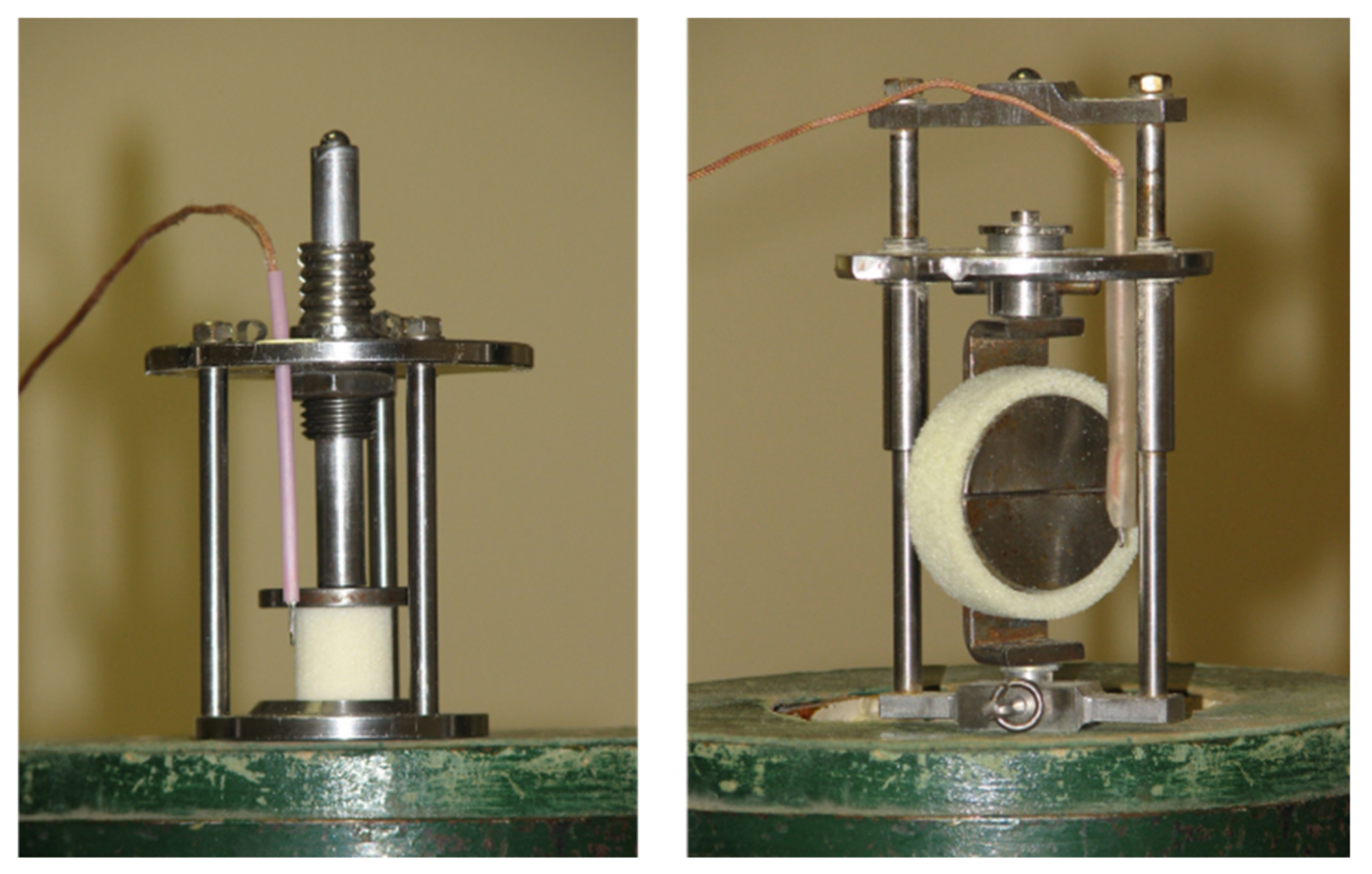
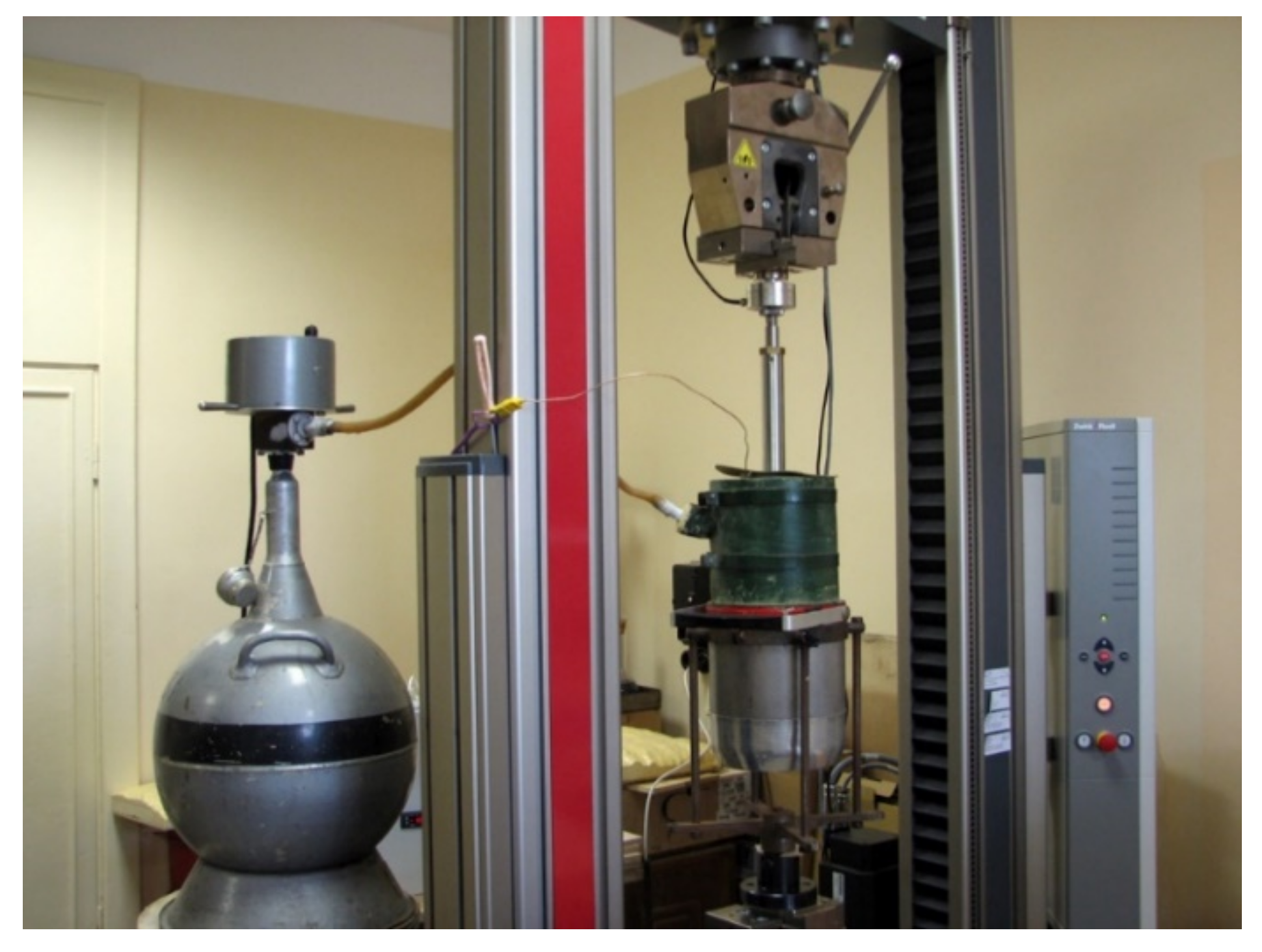

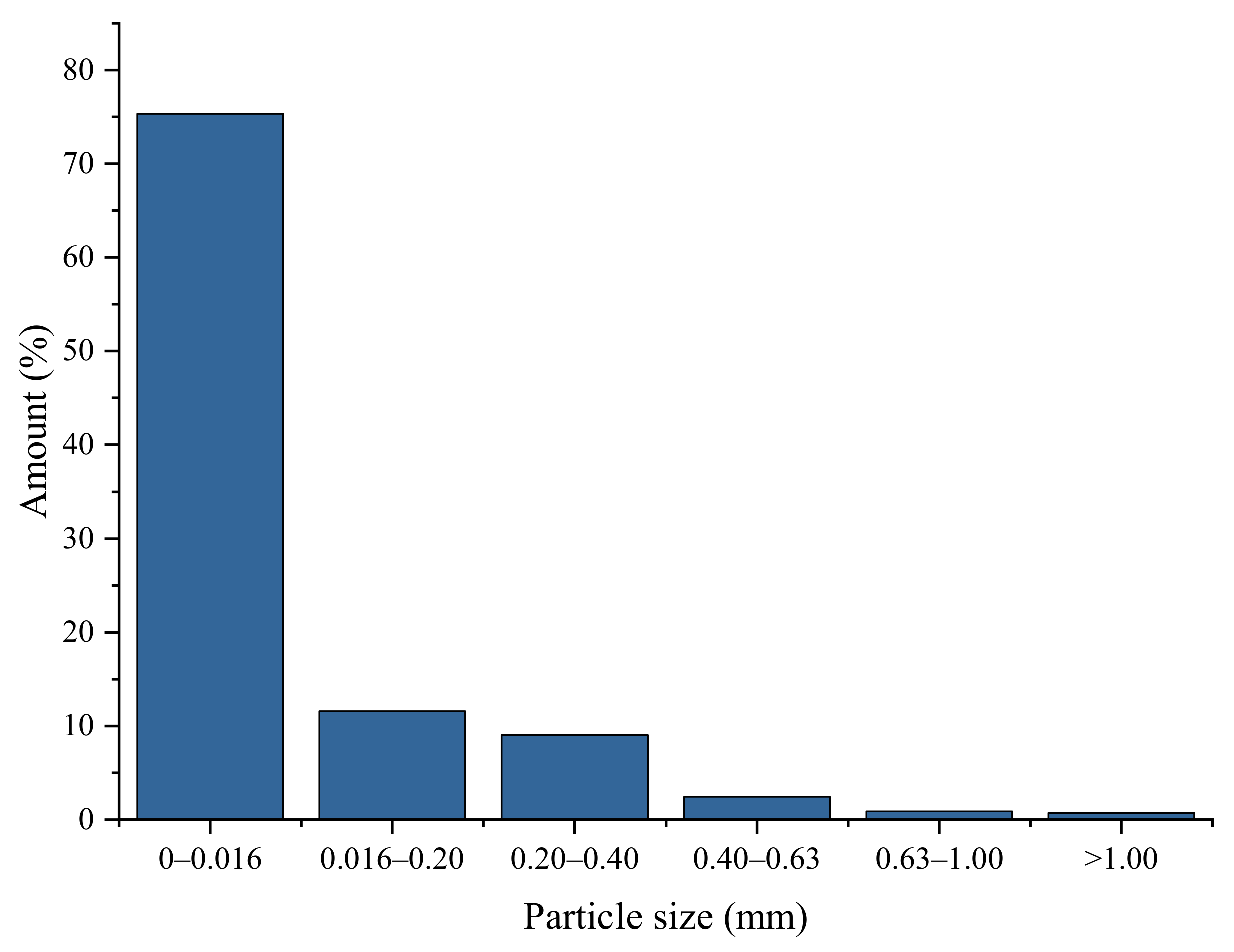

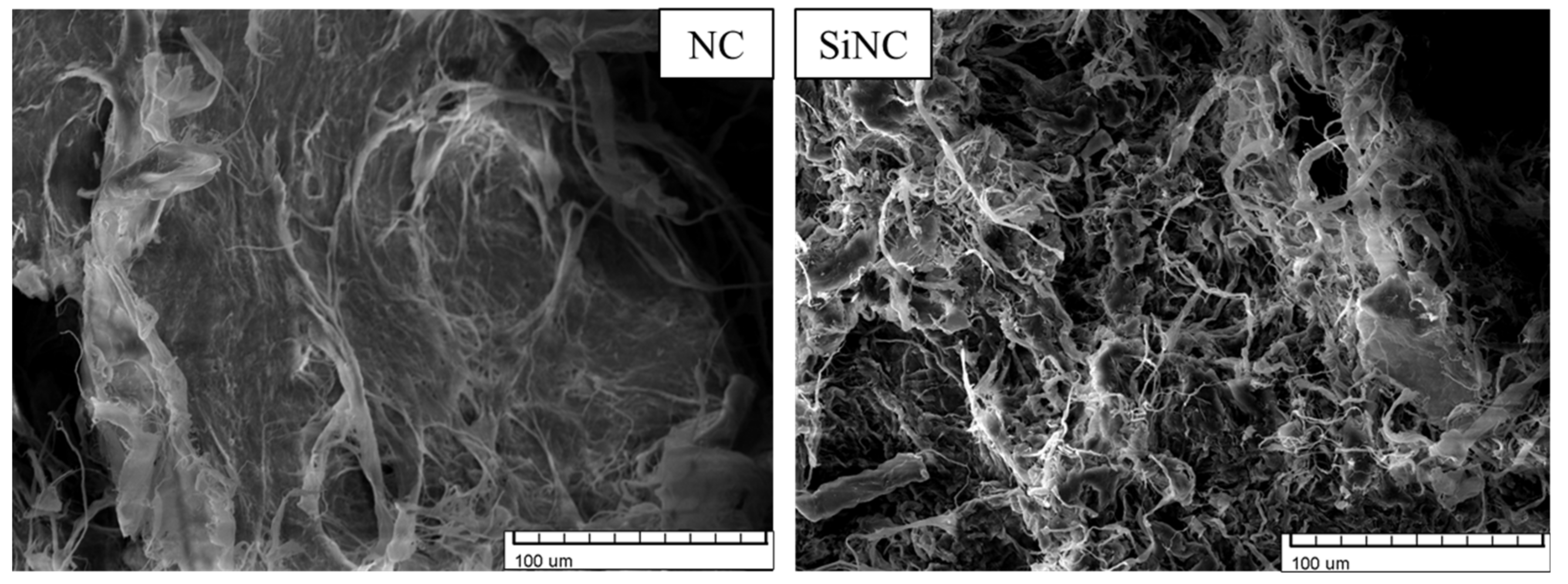

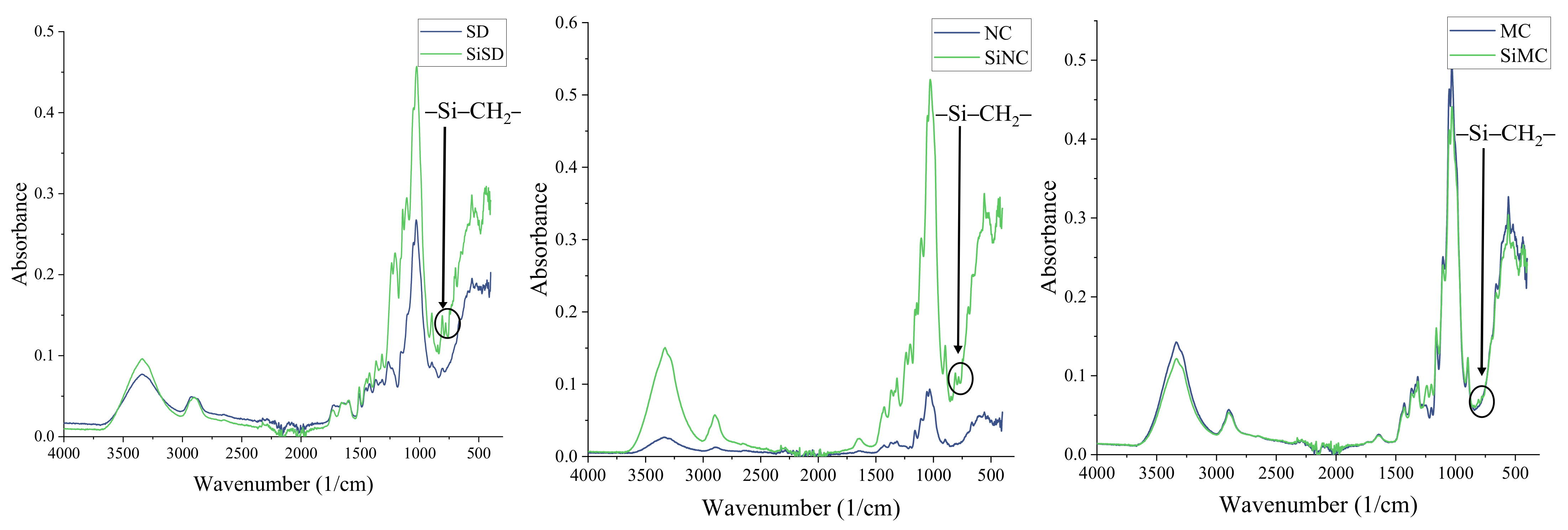


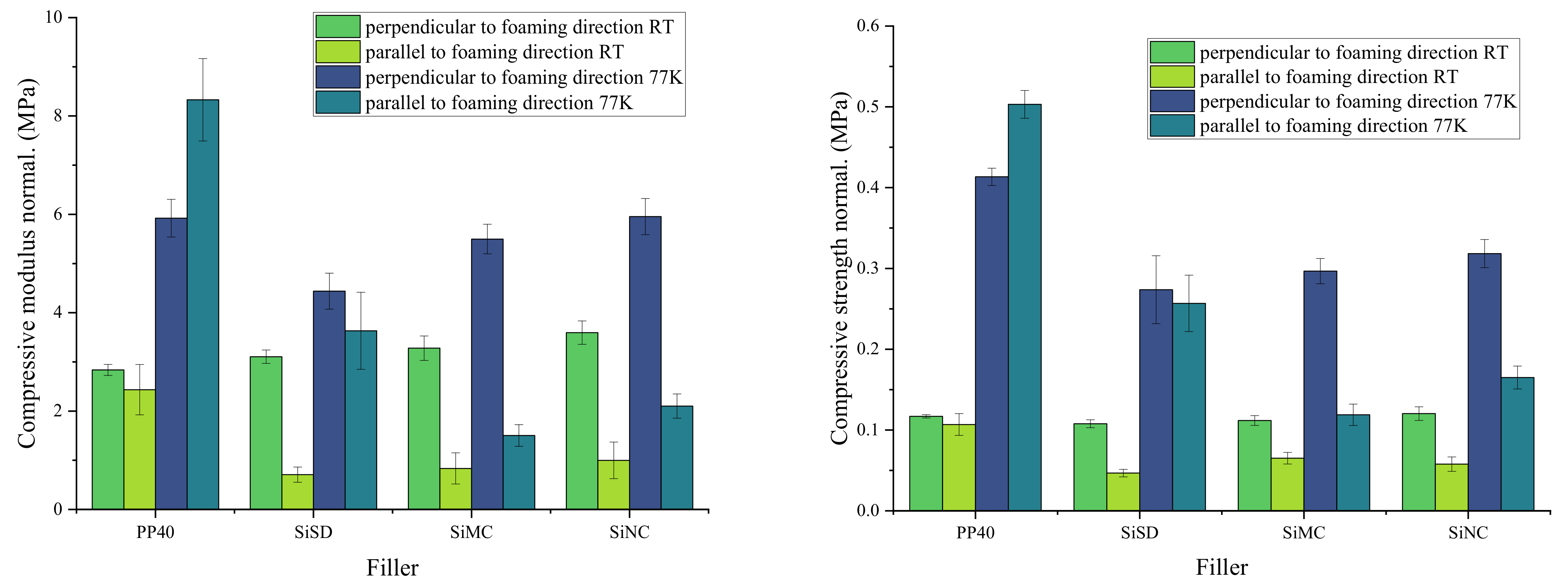
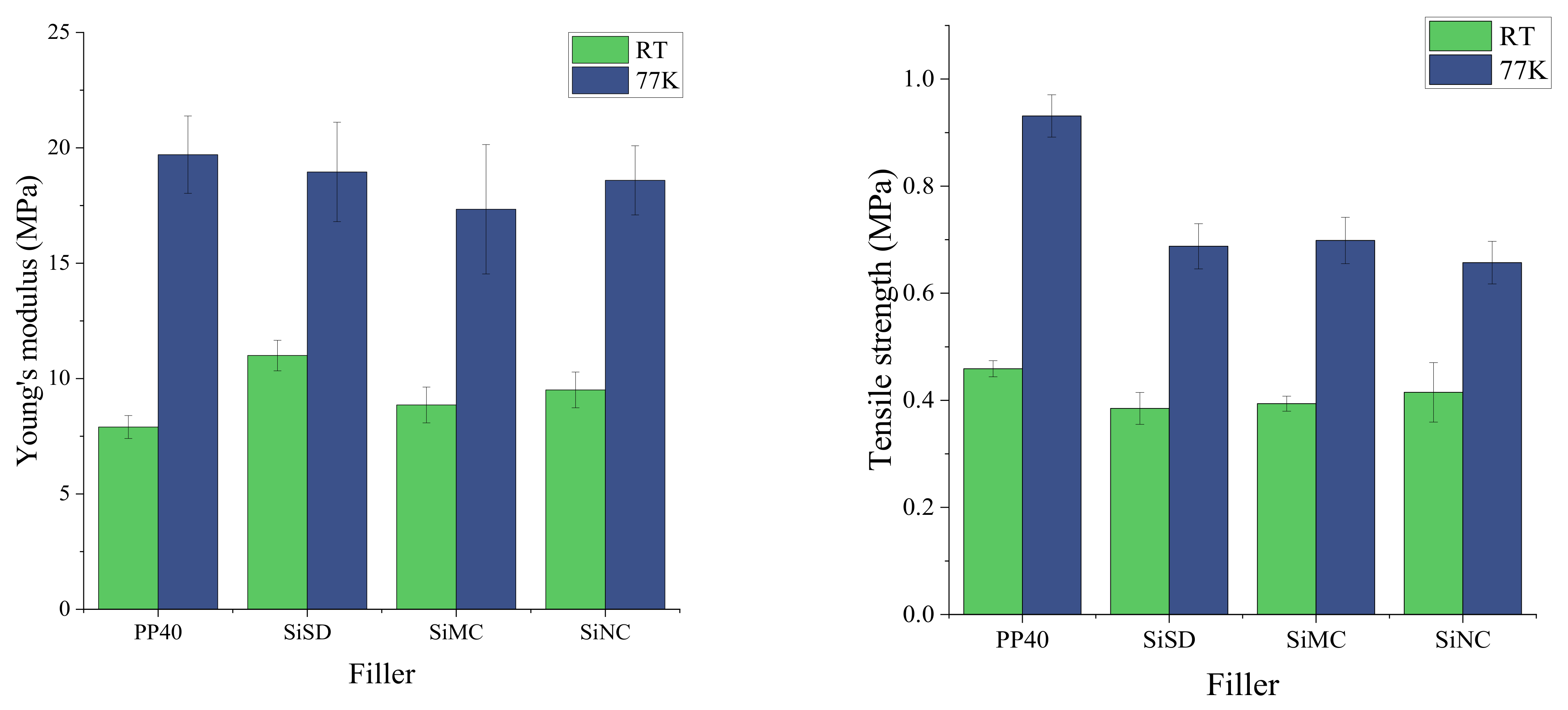
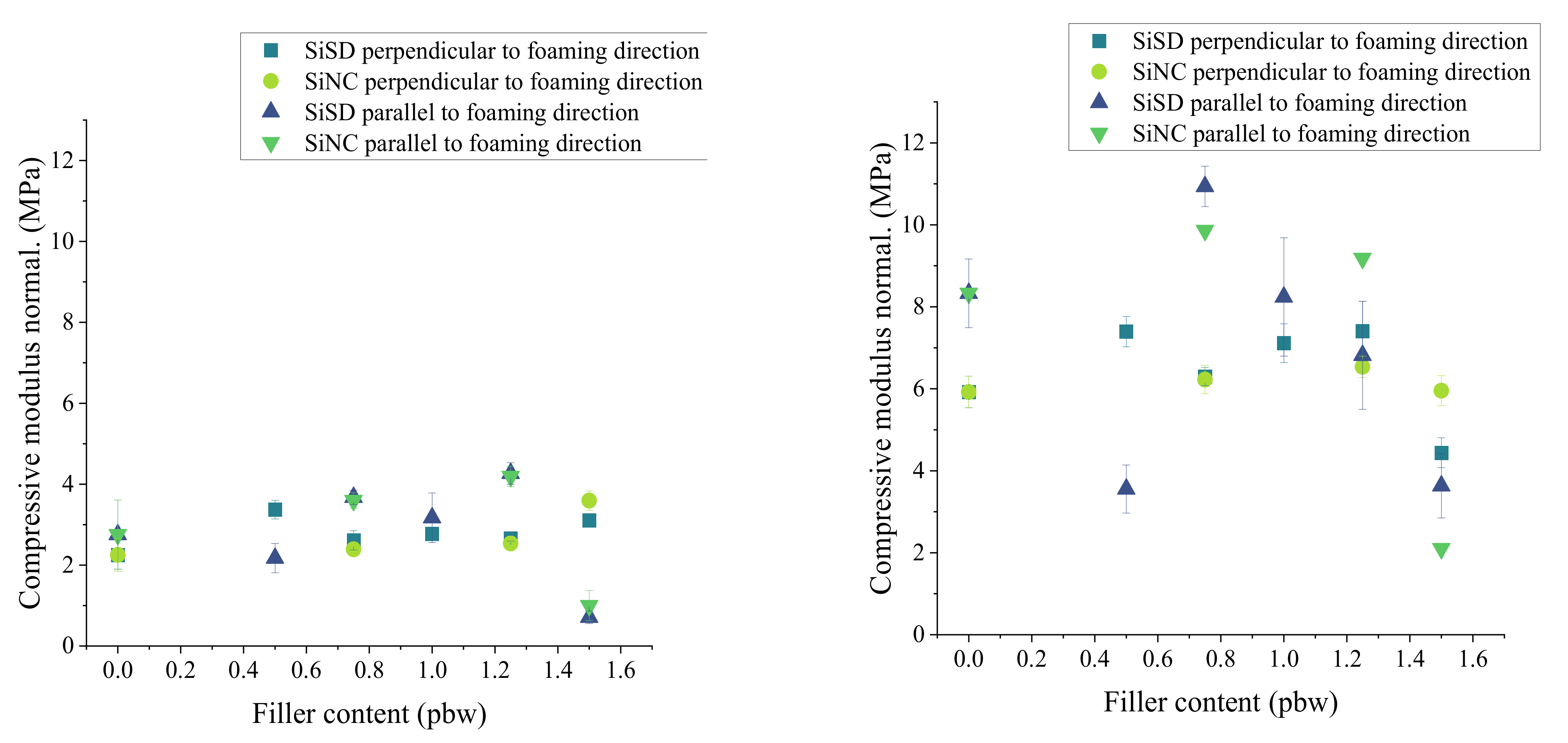

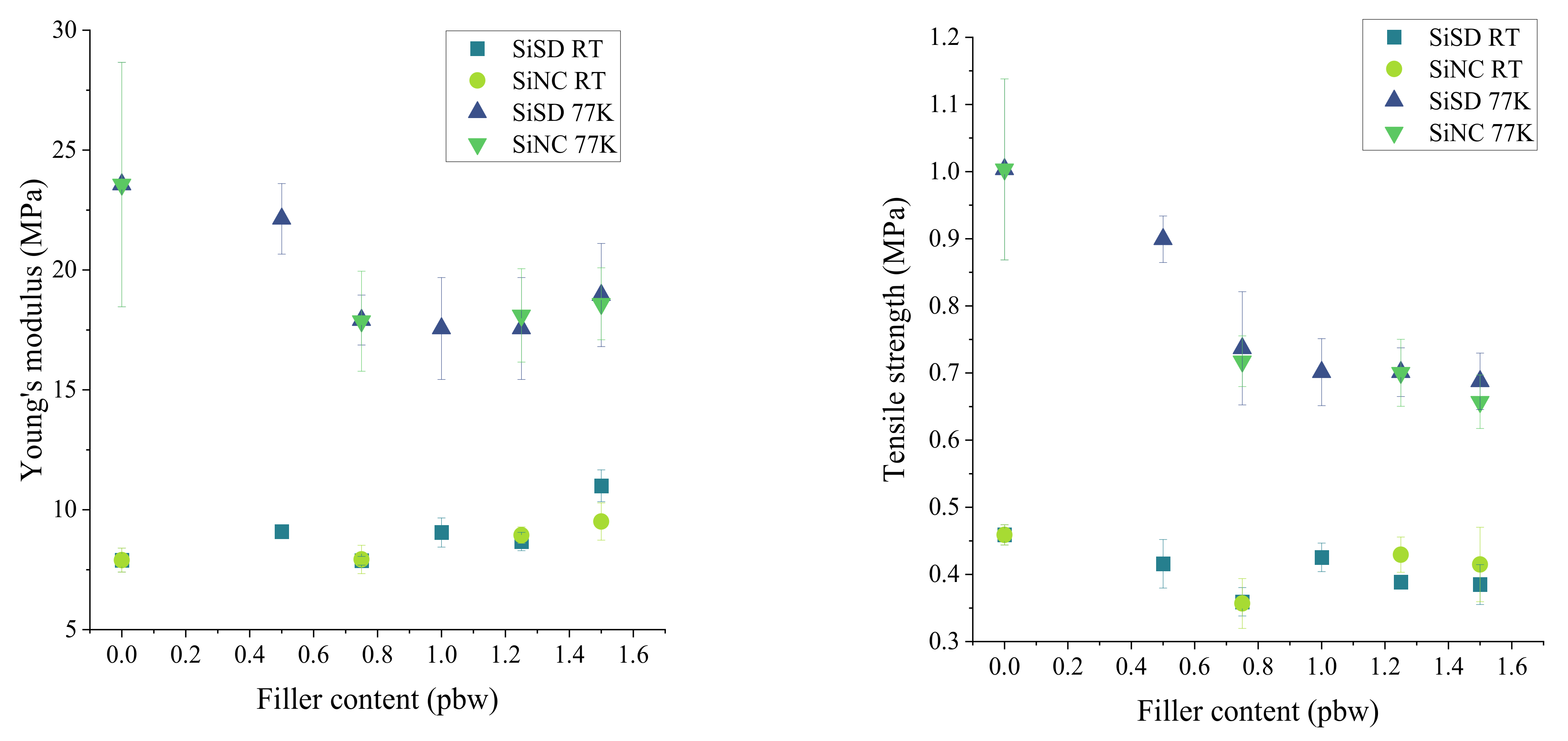
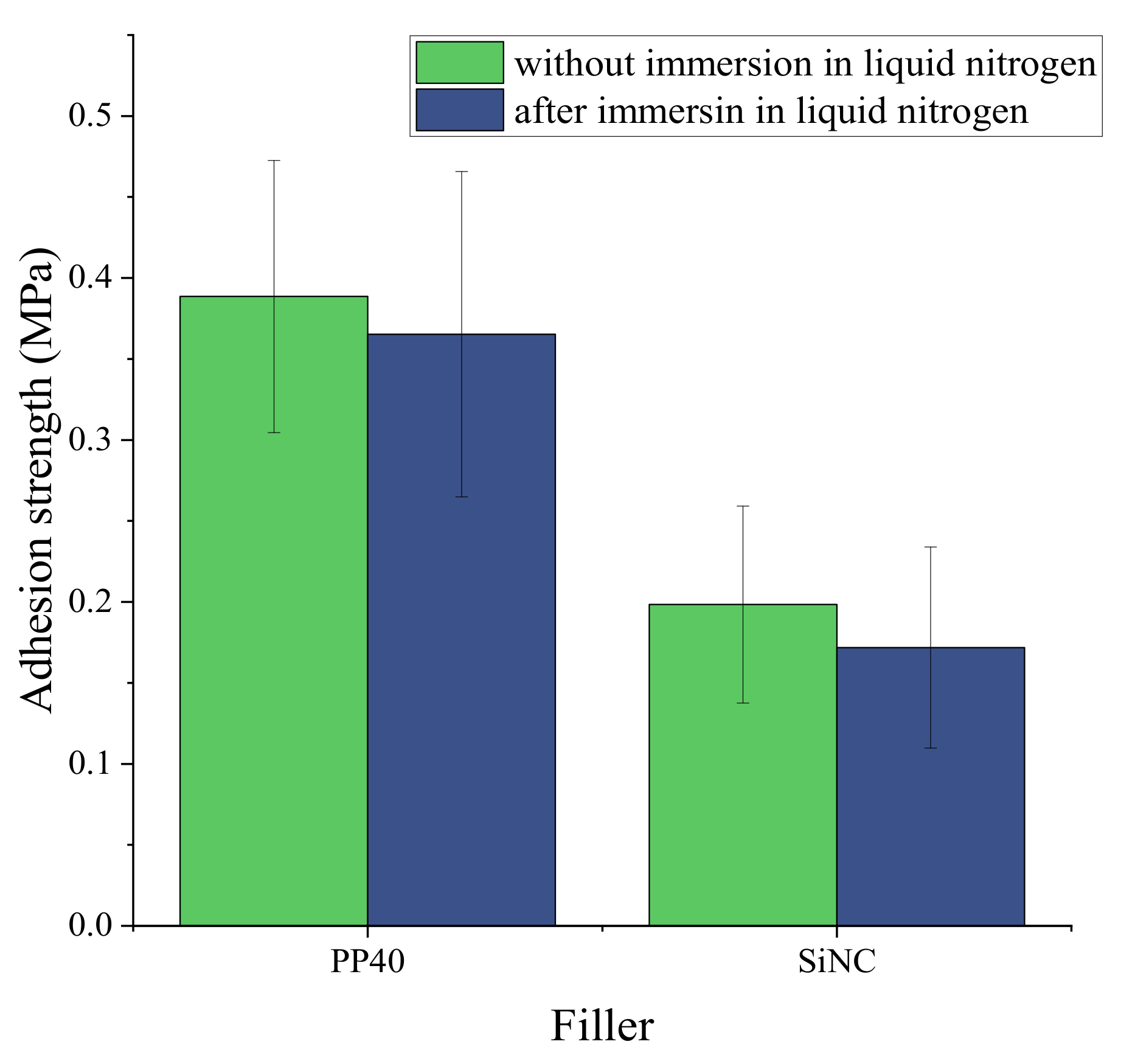
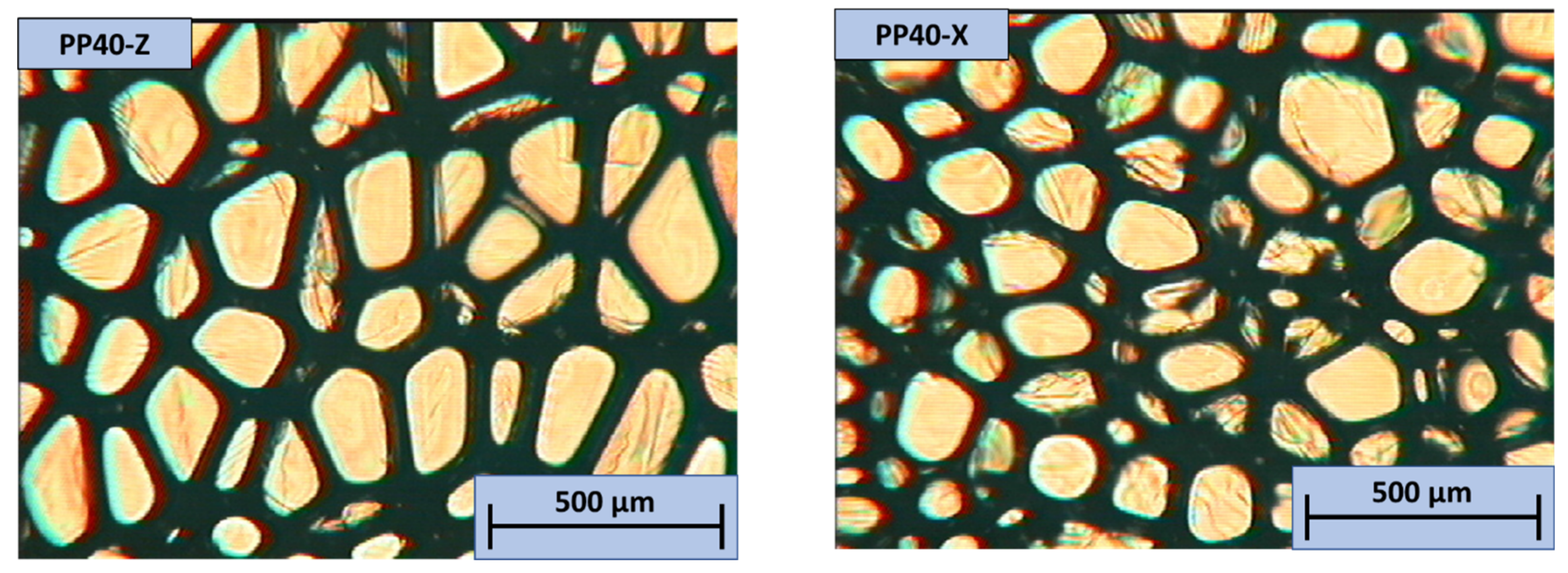

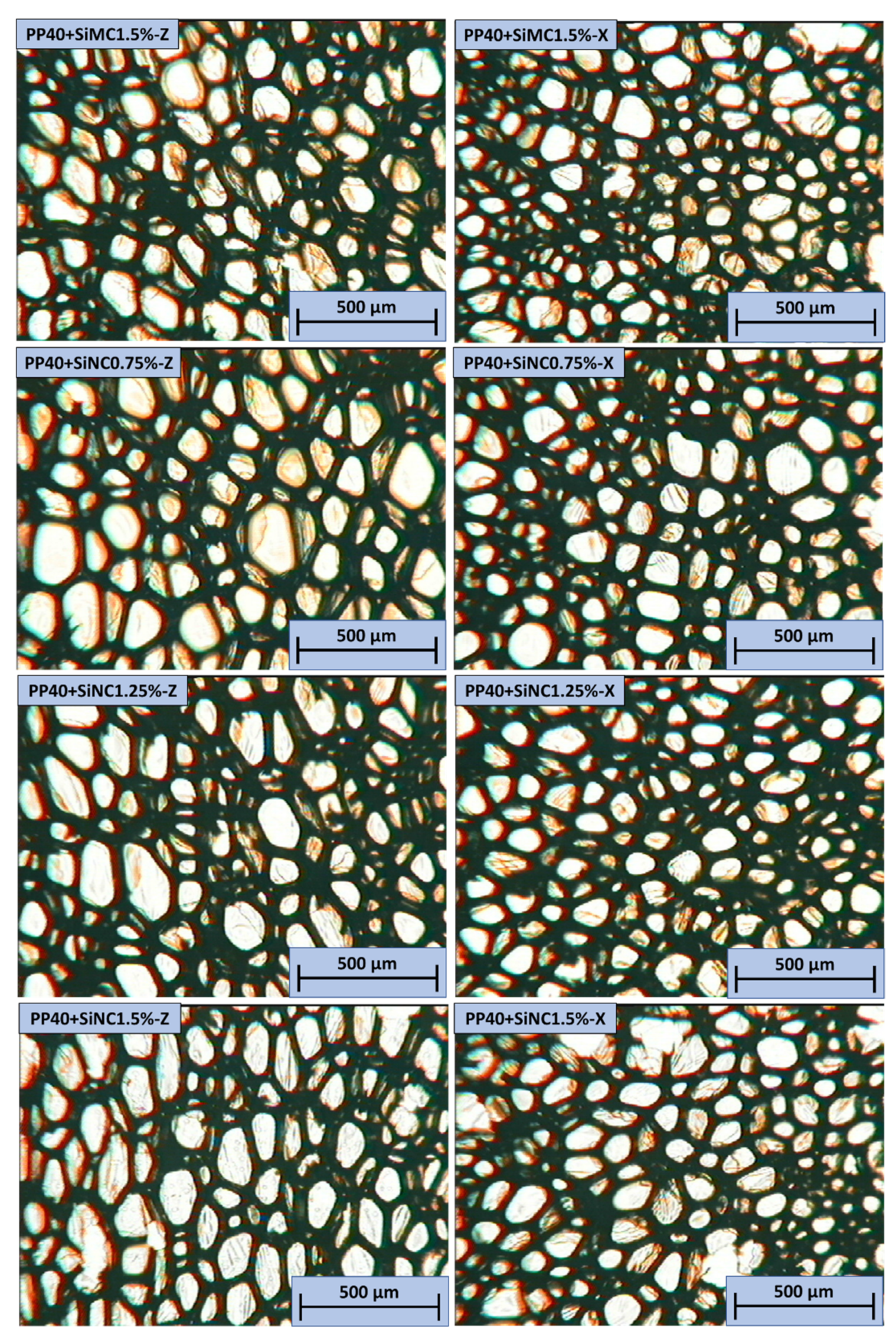
| Components | Amount, pbw | Main Characteristics | |
|---|---|---|---|
| Polyols | ETOFA/TEOA | 25 | Renewable material content 60.7%, OH value 449 mg KOH/g, water content 0.14% |
| HF | 30 | Renewable material content 69.1%, OH value 267 mg KOH/g, water content 0.40% | |
| DEG | 25 | OH value 1057 mg KOH/g, water content 0.17% | |
| NEO 380 | 20 | Recycled material content 50%, OH value 366 mg KOH/g, water content 0.21% | |
| Flame retardant | TCPP | 15 | CAS: 13674-87-8 |
| Blowing agents | Solkane® 365/227 | 25 | Blend of 1,1,1,3,3-pentafluorobutane and 1,1,1,2,3,3,3-heptafluoropropane |
| Water | 0.5 | - | |
| Catalysts | Polycat® 5 | 0.5 | CAS: 3030-47-5 |
| Tin butyl dilaurate | 0.01 | CAS: 77-58-7 | |
| Surfactant | L-6915 | 1.5 | Organosilicon surfactant |
| Isocyanate index | 110 | - | |
| Polyisocyanate | pMDI | 147 | Isocyanate group content 31.5% |
| Fillers | SD, SiSD, NC, SiNC, MC, SiMC | 0.5–1.5 wt% | SD, SiSD—brown, solid particles NC, SiNC, MC, SiMC—white, solid particles |
| Composite | Apparent Density ρ, kg/m3 | Shrinkage,% | Coefficient of Thermal Conductivity λ, mW/(m ∙ K) |
|---|---|---|---|
| Neat PP40 | 52.7 | 0.2 | 18.72 |
| PP40 + SD1.5% | 56.3 | 4.9 | - |
| PP40 + SiSD1.5% | 60.1 | 2.6 | 17.65 |
| PP40 + MC1.5% | 57.1 | 1.8 | - |
| PP40 + SiMC1.5% | 51.3 | 2.4 | 18.45 |
| PP40 + NC1.5% | 58.5 | 1.4 | - |
| PP40 + SiNC1.5% | 55.5 | 3.3 | 18.10 |
| Composite | Coefficient of Thermal Conductivity λ, mW/(m∙K) | Density ρ, kg/m3 | Tensile Elongation at Break at 77 K ε77,% | Shrinkage of Material Cooling it from 300 to 77 K Δl300-77, % | Safety Coefficient ks |
|---|---|---|---|---|---|
| Neat PP40 | 18.72 | 52.7 | 5.1 | 1.86 | 2.73 |
| PP40 + SiSD0.5% | 18.43 | 61.4 | 3.5 | 1.65 | 2.11 |
| PP40 + SiSD0.75% | 18.59 | 58.3 | 3.7 | 1.62 | 2.28 |
| PP40 + SiSD1.0% | 18.89 | 55.5 | 4.1 | 1.48 | 2.78 |
| PP40 + SiSD1.25% | 18.69 | 58.2 | 3.9 | 1.35 | 2.86 |
| PP40 + SiSD1.5% | 17.65 | 60.1 | 3.3 | 1.49 | 2.25 |
| PP40 + SiMC1.5% | 18.45 | 51.3 | 3.1 | 1.83 | 1.72 |
| PP40 + SiNC0.75% | 18.16 | 58.4 | 4.0 | 1.69 | 2.36 |
| PP40 + SiNC1.25% | 18.93 | 54.7 | 3.9 | 1.24 | 3.14 |
| PP40 + SiNC1.5% | 18.10 | 55.5 | 3.5 | 1.62 | 2.18 |
| Composite | Z | X |
|---|---|---|
| Anisotropy Index | Anisotropy Index | |
| Neat PP40 | 1.22 ± 0.0392 | 0.94 ± 0.034 |
| PP40 + SiSD0.5% | 1.22 ± 0.0260 | 0.85 ± 0.082 |
| PP40 + SiSD0.75% | 1.16 ± 0.0216 | 0.90 ± 0.021 |
| PP40 + SiSD1.0% | 1.03 ± 0.0830 | 0.87 ± 0.021 |
| PP40 + SiSD1.25% | 1.27 ± 0.0357 | 0.88 ± 0.018 |
| PP40 + SiSD1.5% | 1.15 ± 0.0632 | 0.85 ± 0.034 |
| PP40 + SiMC1.5% | 1.15 ± 0.125 | 0.90 ± 0.023 |
| PP40 + SiNC0.75% | 1.23 ± 0.102 | 0.99 ± 0.0085 |
| PP40 + SiNC1.25% | 1.33 ± 0.0987 | 0.83 ± 0.011 |
| PP40 + SiNC1.5% | 1.42 ± 0.139 | 0.85 ± 0.014 |
Publisher’s Note: MDPI stays neutral with regard to jurisdictional claims in published maps and institutional affiliations. |
© 2021 by the authors. Licensee MDPI, Basel, Switzerland. This article is an open access article distributed under the terms and conditions of the Creative Commons Attribution (CC BY) license (https://creativecommons.org/licenses/by/4.0/).
Share and Cite
Sture, B.; Vevere, L.; Kirpluks, M.; Godina, D.; Fridrihsone, A.; Cabulis, U. Polyurethane Foam Composites Reinforced with Renewable Fillers for Cryogenic Insulation. Polymers 2021, 13, 4089. https://doi.org/10.3390/polym13234089
Sture B, Vevere L, Kirpluks M, Godina D, Fridrihsone A, Cabulis U. Polyurethane Foam Composites Reinforced with Renewable Fillers for Cryogenic Insulation. Polymers. 2021; 13(23):4089. https://doi.org/10.3390/polym13234089
Chicago/Turabian StyleSture, Beatrise, Laima Vevere, Mikelis Kirpluks, Daniela Godina, Anda Fridrihsone, and Ugis Cabulis. 2021. "Polyurethane Foam Composites Reinforced with Renewable Fillers for Cryogenic Insulation" Polymers 13, no. 23: 4089. https://doi.org/10.3390/polym13234089







